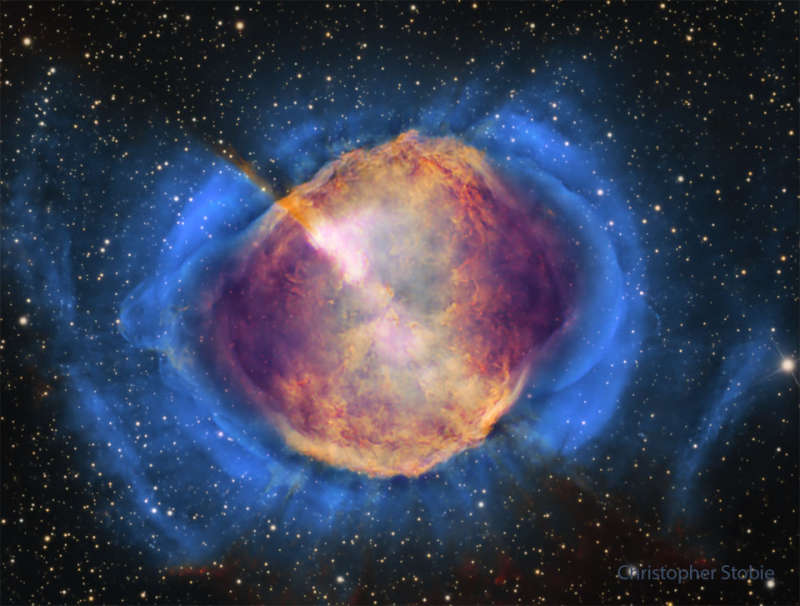 |
Астронет: Астрономическая картинка дня M27: туманность Гантель http://variable-stars.ru/db/msg/1948677/eng |
Credit & Copyright: Christopher Stobie
Explanation:
Is this what will become of our Sun? Quite possibly.
The first hint of our
Sun's future
was discovered inadvertently in
1764.
At that time,
Charles Messier was compiling a list
of diffuse objects not to be confused with comets.
The 27th object on
Messier's list, now known as
M27 or the Dumbbell Nebula, is a
planetary nebula,
one of the brightest
planetary nebulas on the sky and visible with binoculars
toward the constellation of the Fox (Vulpecula).
It takes light about 1000 years to reach us from M27,
featured here in
colors emitted by
sulfur (red),
hydrogen (green) and
oxygen (blue).
We now know that in about 6 billion years,
our Sun will
shed its outer gases into a
planetary nebula like M27,
while its remaining center will become an
X-ray hot
white dwarf star.
Understanding the physics and significance of
M27
was well beyond 18th century science, though.
Even today, many things
remain mysterious about
planetary nebulas, including how their
intricate
shapes are created.
APOD Year in Review:
Night Sky Network Presentation for 2024
Authors & editors:
Robert Nemiroff
(MTU) &
Jerry Bonnell
(USRA)
NASA Web Site Statements, Warnings,
and Disclaimers
NASA Official: Jay Norris.
Specific
rights apply.
A service of:
LHEA at
NASA /
GSFC
& Michigan Tech. U.
